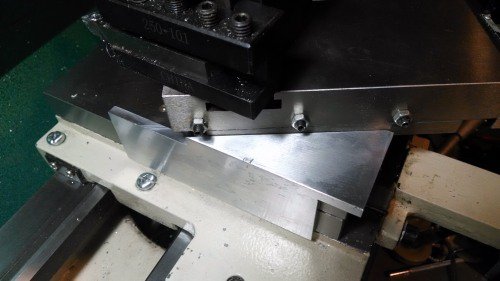- Joined
- Feb 1, 2015
- Messages
- 9,948
Jim, The vertical side mates to the left hand vertical surface of the cross slide. The vertical edge of the triangle mates to the left hand vertical edge of the compound base. I have a beefed up compound clamp, the corner of which is visible as a vertical surface above the cross slide and below the 90 degree angle on the triangle. It is slightly inset from the slide so I am referencing the slide and not the clamp.RJ, Could you show me a picture of where/how you use this on your 602? I have the VFD version the that lathe and would like an easy way to set it for threading. I know exactly what you mean about hard to see/read the dial on the compound.
Jim
Bob

